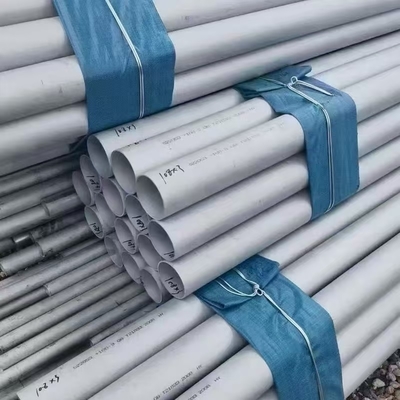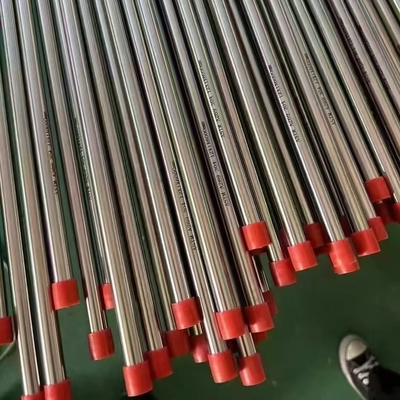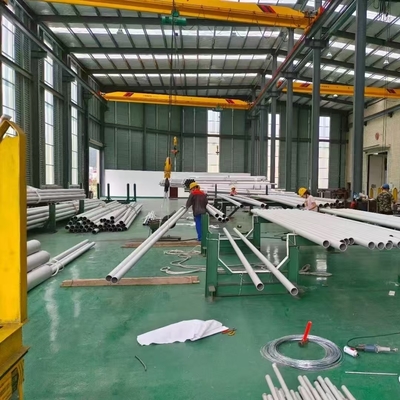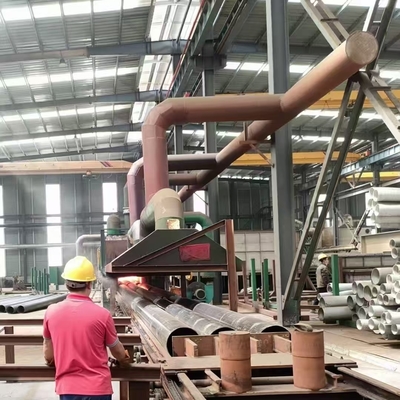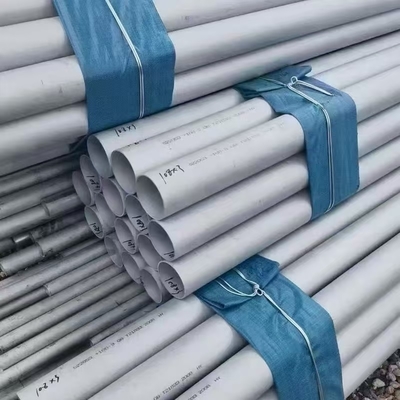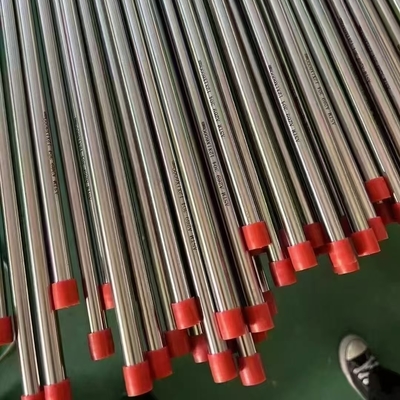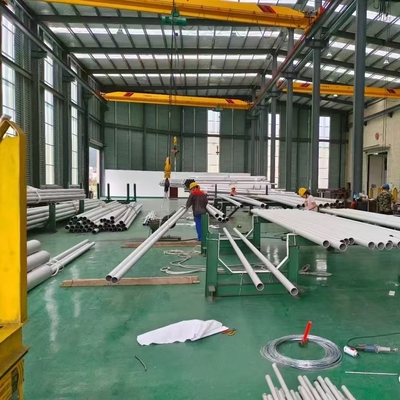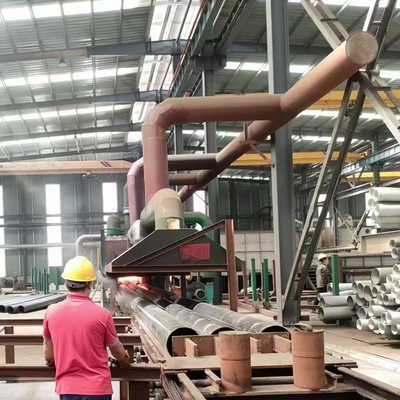-
 Raian Ionescuよい物質的な質非常に。私達は協力することを持っている10年以上。それらはロットの種類の鋼鉄材料を交換する。よいすべての物質的な質。それらすべての物質的な質のための義務。私達はそれらに将来協力し続けるために平になっている
Raian Ionescuよい物質的な質非常に。私達は協力することを持っている10年以上。それらはロットの種類の鋼鉄材料を交換する。よいすべての物質的な質。それらすべての物質的な質のための義務。私達はそれらに将来協力し続けるために平になっている
316Ti Stainless Steel Seamless Pipe ASTM EN DN10-DN400

試供品およびクーポンのための私に連絡しなさい。
Whatsapp:0086 18588475571
Wechat: 0086 18588475571
Skype: sales10@aixton.com
心配があれば、私達は24時間のオンライン・ヘルプを提供する。
x| 製品 | ステンレス鋼のシームレスパイプ | 学年 | 316ti |
|---|---|---|---|
| 直径 | DN10 -DN400 | 長さ | 6Mまたはリクエストとして任意の長さをカスタムカットします |
| 標準 | ASTM EN | サービス | 切断 |
| ロードポート | 上海港 | 厚さ | 4.0-50.0mm |
| ハイライト | 316Ti stainless steel pipe,S31635 seamless pipe,welded SS piping tube |
||
Alloy 316Ti Pipe / SS Pipe / S31635 Seamless Pipe Welded Pipe 316Ti SS Piping Tube
Products Specification
| Products Name | 316Ti Stainless Steel Seamless Pipe |
Grade: |
304 304L 304LN 304H 309S 310S 314 315 316L 316Ti 317L 321 329 347H 410 2205 2507 2550 S32760 904L 254SMO and equal grade in GB JIS EN DIN Standard |
| Standards: | ASTM A213M-94b ASTM A249M-94a ASTM A269-94a ASTM A312M-94b,ect. ASTM A790 |
| DIN 17456-85 DIN 17458-85 DIN 17459-92.ect | |
| JIS G3446-1994 JIS G3448-1997 JIS G3459-1997 JIS G3463-1994,ect. | |
| GB13296-1991 GB14975-2002 GB14976-2002,ect. | |
| Size: | ND5 - DN400 |
| Length: | 6m length or cutting any length as request |
| Applications: | fluid and gas transport, structure , boiler, heat exchanger, super heater |
1 Introduction
Alloy 316Ti is a variant of 316 stainless steel enhanced with titanium to improve its stability and performance in corrosive environments. The primary role of titanium is to combine with carbon in the steel, forming titanium carbides instead of chromium carbides. This mechanism preserves the chromium content in the solid solution, thereby maintaining the material's resistance to intergranular corrosion 1. This characteristic is especially crucial in applications involving welding or prolonged exposure to high temperatures, where standard stainless steels might suffer from sensitization and subsequent corrosion failure.
The pipes made from this alloy are manufactured in both seamless and welded forms. Seamless pipes are produced through extrusion or piercing methods, making them ideal for high-pressure applications, while welded pipes are fabricated from rolled sheets or plates welded longitudinally, offering cost-effectiveness for low to medium-pressure uses. The inherent properties of 316Ti, such as excellent toughness, good ductility, and ease of fabrication, allow these pipes to be used in a wide range of demanding environments 2.
Key advantages of 316Ti pipes include their superior performance in acids like sulfuric, phosphoric, and acetic acids, and resistance to pitting and crevice corrosion in chloride-containing environments, such as seawater and marine atmospheres. Moreover, their non-magnetic nature and stability at both high and low temperatures expand their usability across various industries, from chemical processing to aerospace 6.
2 Parameters
The performance and suitability of 316Ti stainless steel pipes for specific applications are determined by their mechanical properties, chemical composition, and physical characteristics. These parameters ensure the material meets the necessary quality and reliability standards for industrial use.
2.1 Mechanical Properties
316Ti stainless steel pipes exhibit high strength and good ductility, even in elevated temperature conditions. The following table summarizes key mechanical properties typically required by standards:
| Property | Value | Condition/Note |
|---|---|---|
| Tensile Strength (Rm) | ≥520 MPa | |
| Yield Strength (Rp0.2) | ≥205 MPa | |
| Elongation (A) | ≥40% | |
| Hardness (HBW) | ≤187 |
These properties are achieved after a solution treatment (annealing) at temperatures between 1000-1100°C, followed by rapid cooling 12. This heat treatment ensures the dissolution of precipitates and homogenizes the microstructure, resulting in optimal corrosion resistance and mechanical performance.
2.2 Chemical Composition
The chemical composition is fundamental to the alloy's performance. The titanium addition is critical for preventing chromium carbide formation.
| Element | Content (%) | Note |
|---|---|---|
| Carbon (C) | ≤0.08 | Low carbon to minimize carbides |
| Chromium (Cr) | 16.0 - 18.0 | Provides corrosion resistance |
| Nickel (Ni) | 10.0 - 14.0 | Stabilizes austenitic structure |
| Molybdenum (Mo) | 2.0 - 3.0 | Enhances pitting resistance |
| Titanium (Ti) | ≥5*C - 0.70 | Stabilizes against sensitization |
| Manganese (Mn) | ≤2.00 | |
| Silicon (Si) | ≤1.00 | |
| Phosphorus (P) | ≤0.045 | |
| Sulfur (S) | ≤0.030 |
The titanium content is specifically designed to be at least five times the carbon content, ensuring sufficient stabilization 167.
2.3 Physical Properties
The physical properties of 316Ti influence design considerations, such as thermal expansion and heat transfer efficiency.
| Property | Value |
|---|---|
| Density | 7.9 g/cm³ |
| Melting Point | ~1375-1450 °C |
| Thermal Conductivity | 16.0 W/m·K (at 100°C) |
| Electrical Resistivity | 0.75 Ω·mm²/m (at 20°C) |
| Coefficient of Thermal Expansion | 15.7-17.6 ×10⁻⁶/K (100-500°C) |
| Specific Heat Capacity | 0.5 kJ/kg·K (20-100°C) |
These properties make 316Ti pipes suitable for applications involving thermal cycling and moderate high-temperature services 26.
3 Standards & Similar Grades
316Ti stainless steel pipes are produced under various international standards, which define their chemical, mechanical, and dimensional requirements. Furthermore, this alloy is known under different designations across national and organizational standards, which is crucial for material selection and global procurement.
3.1 International Standards
Pipes made from 316Ti are manufactured to comply with numerous standard specifications that ensure their quality and performance. Key standards include:
-
ASTM A213/A269/A312: These American standards cover seamless and welded stainless steel pipes for heat exchangers, general service, and pressure applications.
-
DIN 17456-17459: German standards for stainless steel seamless circular tubes and welded tubes.
-
EN 10216-5: European standard for pressure vessel and structural stainless steel pipes.
-
JIS G3459: Japanese Industrial Standard for stainless steel pipes.
-
GB/T 14976: Chinese standard for fluid transmission using stainless steel pipes.
These standards specify requirements for chemical composition, mechanical properties, heat treatment (typically solution annealed), dimensional tolerances, and testing methods (e.g., hydrostatic testing, non-destructive testing) 17.
3.2 Similar Grades
The following table lists the equivalent grades of 316Ti in different international standards:
| Country/Standard | Grade/Designation | Common Name |
|---|---|---|
| ISO | X6CrNiMoTi17-12-2 | – |
| Germany (DIN) | 1.4571 | – |
| Europe (EN) | X6CrNiMoTi17-12-2 | – |
| USA (ASTM) | S31635 | 316Ti |
| USA (UNS) | S31635 | – |
| Japan (JIS) | SUS316Ti | – |
| China (GB) | 0Cr18Ni12Mo3Ti (Old) | – |
| 06Cr17Ni12Mo2Ti (New) | – | |
| UK (BS) | 320S31, 320S17 | – |
Table: Similar grades of 316Ti in different international standards 167.
Understanding these equivalent grades is essential for engineers and designers working with international projects or specifications to ensure the selected material meets the required performance criteria regardless of the national standard used.
4 Product Surface Types
316Ti stainless steel pipes are available in various surface finishes tailored to meet specific application requirements, such as corrosion resistance, aesthetic appeal, hygienic properties, or ease of cleaning. The surface treatment can significantly impact the pipe's performance, especially in corrosive or high-purity environments.
Common surface finishes for 316Ti pipes include:
-
Annealed and Pickled: This is a standard finish where the pipe undergoes heat treatment (annealing) followed by pickling in an acid solution (usually a mixture of nitric and hydrofluoric acids). This process removes scale and oxide layers formed during high-temperature processing, resulting in a dull, matte surface that offers good corrosion resistance and is suitable for a wide range of industrial applications 2.
-
Polished Finishes: Polished surfaces are crucial for applications requiring smooth flow, easy cleaning, or aesthetic appeal. They are common in the food, pharmaceutical, and chemical industries.
-
#4 Polish (Brushed Finish): Achieved with a medium-grit abrasive belt, producing a uniform satin finish with short, parallel polishing lines. It offers a balance between aesthetics and ease of maintenance.
-
#8 Polish (Mirror Finish): The highest quality polish, using progressively finer abrasives followed by extensive buffing. This results in a reflective, mirror-like surface with no visible grit lines. It is essential for applications requiring exceptional hygiene and minimal friction to prevent adhesion or buildup of materials 38.
-
-
Bright Annealed (BA): Bright annealing involves heat treatment in a controlled atmosphere furnace (e.g., vacuum or hydrogen atmosphere) to preclude oxide formation on the surface. The resulting pipe has a bright, reflective surface similar to a mirror finish but without mechanical polishing. BA tubes are often used in decorative applications, instrumentation, and high-purity systems where a smooth, clean surface is paramount 8.
-
Industrial Surface (No. 1): This surface, typically resulting from hot rolling and annealing followed by descaling, has a rough, dull appearance. It is generally used for industrial applications where surface finish is not critical, such as in structural components or some utility piping 8.
The choice of surface finish depends on the functional requirements of the application. For instance, a mirror finish might be chosen for sanitary processing, while a pickled surface could be sufficient for a closed chemical transfer line without aesthetic concerns.
5 Applications
316Ti stainless steel pipes are renowned for their exceptional corrosion resistance and high-temperature stability, making them a preferred choice across numerous demanding industries. Their performance stems from the synergistic effect of molybdenum and titanium additions, enhancing their resistance to various corrosive media and preventing sensitization.
-
Chemical and Petrochemical Industry: This is a primary application area for 316Ti pipes. They are extensively used in reactors, pressure vessels, heat exchangers, and piping systems that handle corrosive chemicals such as sulfuric acid, phosphoric acid, organic acids, and other aggressive intermediates 4. The titanium stabilization ensures that welded structures maintain their corrosion resistance, which is critical for the safety and longevity of chemical processing plants.
-
Power Generation: In the nuclear power sector, 316Ti is a key material for specific components due to its resistance to corrosion in high-temperature water and its improved performance under irradiation. It is used in pressurizer surge lines, reactor internals, steam generator internals (like hot-leg nozzles), and nuclear submarine propulsion systems 9. Studies have shown that 316Ti forms a stable, protective oxide layer in simulated pressurized water reactor (PWR) primary water conditions (300°C, high pressure), leading to very low uniform corrosion rates over extended periods 9.
-
Marine and Offshore Engineering: The excellent resistance to pitting and crevice corrosion in chloride-containing environments makes 316Ti pipes ideal for seawater handling systems, desalination plant piping, offshore platform pipework, and components in shipbuilding 4. They can withstand the harsh marine atmosphere and direct seawater exposure better than non-stabilized or non-molybdenum-containing stainless steels.
-
Pharmaceutical and Food Processing: While 316L is also prevalent, 316Ti is specified in equipment where welding is extensive and the highest assurance against intergranular corrosion is required, especially during subsequent cleaning and sterilization cycles. This includes piping for API (Active Pharmaceutical Ingredient) transfer, fermentation vessels, and high-purity water systems 4. Its smooth, polishable surface supports hygienic design principles.
-
Automotive and Aerospace: In high-performance exhaust systems, particularly in cars, the high-temperature strength and resistance to thermal fatigue offered by 316Ti are beneficial. In aerospace, it finds use in certain hydraulic lines and engine components due to its reliability under stress and corrosive conditions 4.
-
Construction and Architecture: Although less common than 304 or 316, 316Ti is employed in architectural façades, roofing, and structural elements in highly corrosive environments, such as coastal areas or industrial complexes, where its enhanced durability justifies its use 4.
The selection of 316Ti over other stainless steels is typically driven by conditions involving elevated temperatures, welding operations, and exposure to moderately to severely corrosive media, particularly acids and chlorides.
6 Other 316Ti Stainless Steel Products
Beyond pipes and tubing, 316Ti stainless steel is available in a comprehensive range of product forms to meet the diverse needs of manufacturing and construction. This versatility allows designers to specify the same high-performance alloy for various components within a system.
-
Sheets/Plates: 316Ti is supplied in thin sheets (e.g., 0.5mm) to thick plates (e.g., 100mm) 1. These are used for fabricating chemical processing vessels, tanks, pressure containers, and heat exchanger shells. Sheets with polished surfaces (e.g., #4, #8) are used for architectural cladding, kitchen equipment, and pharmaceutical processing surfaces.
-
Bar and Wire Rod: Round bars, hex bars, and square bars are common forms used for machining valve components, pumps shafts, fasteners, and other critical machinery parts where corrosion resistance is essential 1. Wire rods can be further drawn into wires for springs, mesh, or welding wires.
-
Forgings and Fittings: Forged components made from 316Ti offer superior mechanical properties in critical shapes. This product form is essential for manufacturing pipe fittings (e.g., flanges, elbows, tees), valve bodies, and pump casings used in high-pressure and high-temperature piping systems 2.
-
Tubing (Small Diameter): Besides larger pipes, 316Ti is drawn into small-diameter tubing for specialized applications like instrumentation lines, hydraulic lines, and heat exchanger tubes 8. The seamless variant is preferred for high-pressure duties.
The availability of 316Ti in these various forms ensures material consistency and compatibility across an entire system, simplifying maintenance and ensuring uniform corrosion performance. All these product forms undergo the necessary heat treatment (solution annealing and quenching) to optimize their properties 12.
![]()
![]()
![]()
![]()



